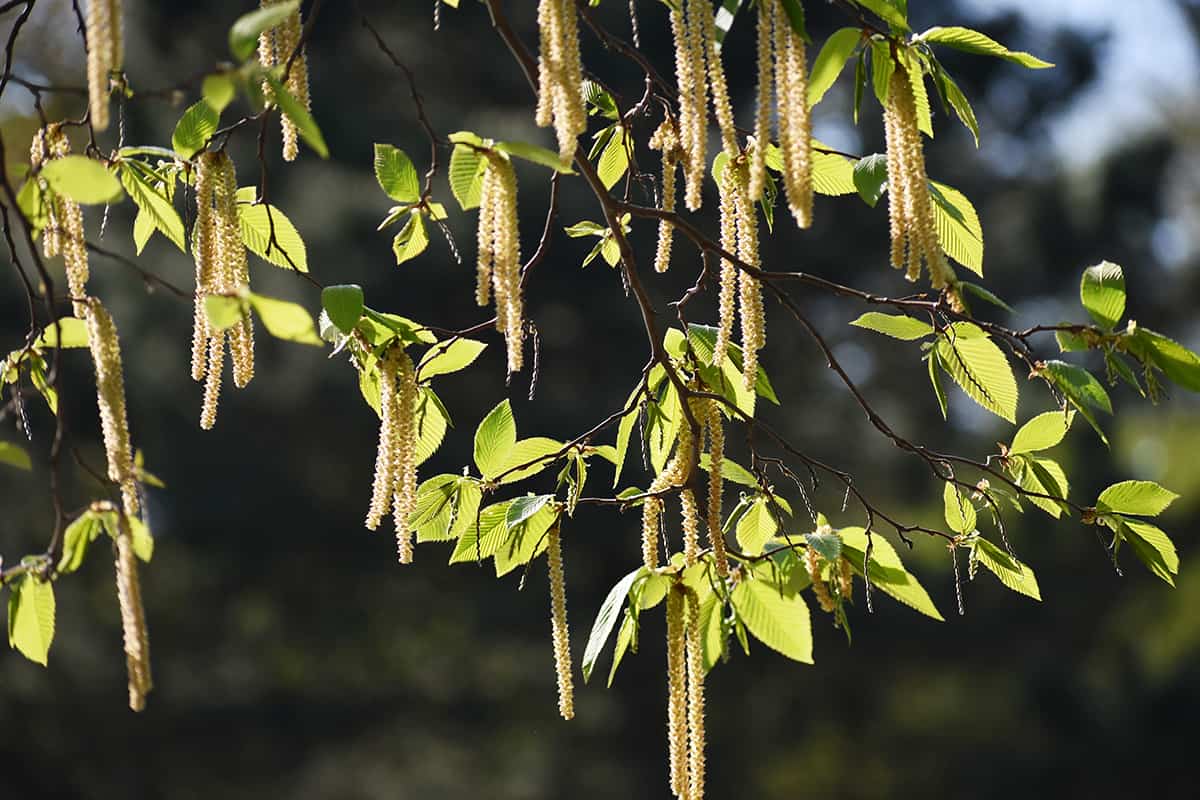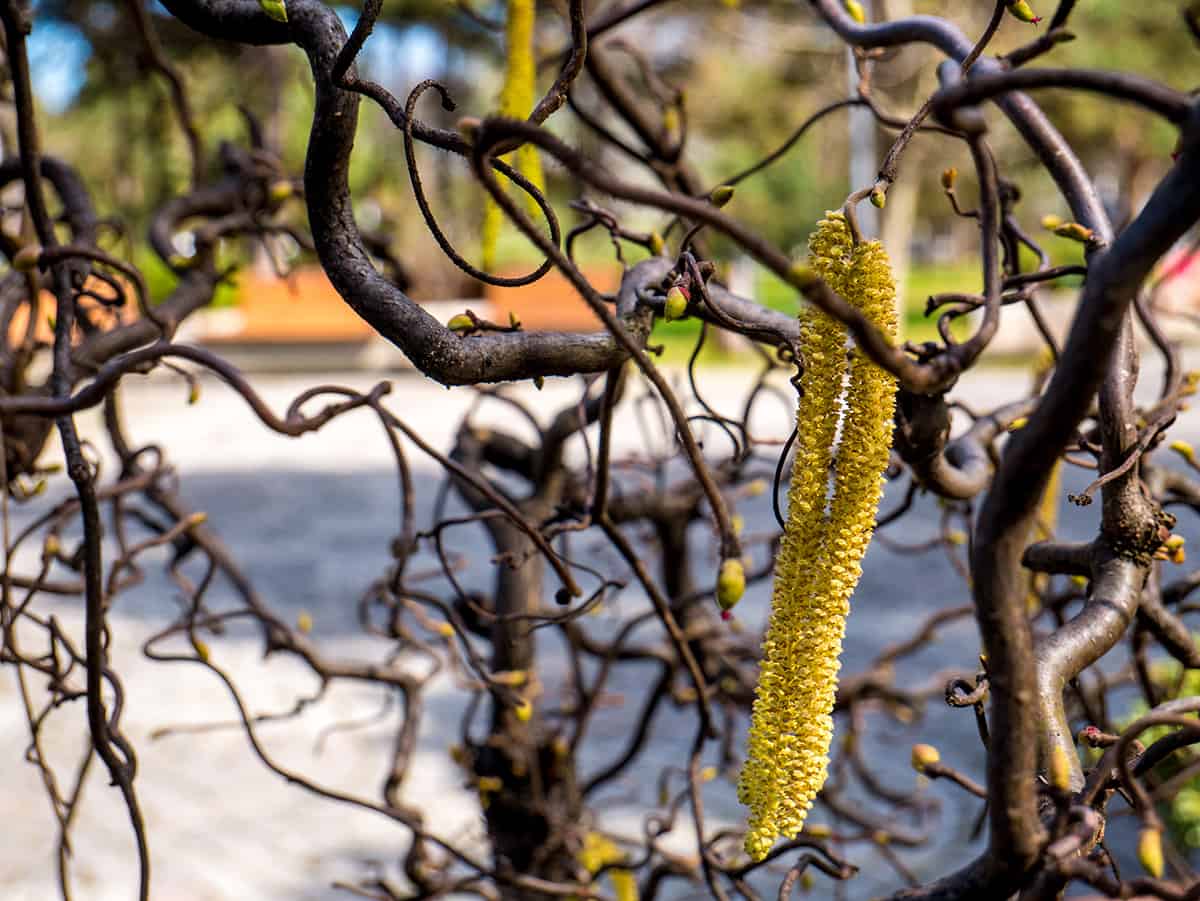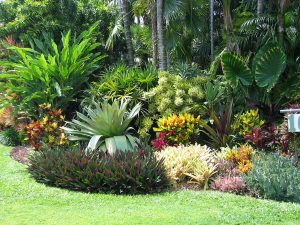The Smooth Alder grows as a large shrub or small multi-stemmed tree. It is a deciduous plant, growing natively in North America, from Nova Scotia in eastern Canada down to Florida and Texas in the southeastern United States. It thrives in a wide range of climates, and can also tolerate a variety of growing conditions.
It offers many benefits to the landscape and local wildlife and is favored as a low-maintenance species.
- Botanical name: Alnus serrulata
- Common names: Smooth Alder, Common Alder, Black Alder, Tag Alder, Hazel Alder
- Plant family: Betulaceae
- USDA hardiness zone: 3 – 9
- Mature height: 10 to 20 feet
- Mature spread: 8 to 15 feet
Table of Contents
What does the Smooth Alder Look Like?
The Smooth Alder is a densely branched plant, which grows to form a pyramid-shaped canopy when mature. The botanical name of the Smooth Alder (Alnus serrulata) is a reference to the foliage of the plant since the leaves have serrated edges. The summer foliage of the plant is green and glossy, with each leaf typically measuring between 2 and 4 inches in length.
As the season progresses, foliage fades to yellow and will sometimes become tinged with bronze, before turning to brown and dropping from the tree in fall.
Flowers of the Smooth Alder arrive in early to mid-spring, and they take the form of catkins, which vary in appearance depending on whether they are male or female. The male catkins are green-yellow and flushed with purple, hanging in pendulous clusters of up to 4 inches in length.
The female catkins are much less showy and appear at the ends of the plant’s branches in small clusters. They are a red-purple color and stand upright. The flowers are followed by fruits that resemble small pine cones, measuring around 1 inch in length.
These brown fruits contain winged seeds, and they will remain on the Smooth Alder for around a year unless they are ravished by birds and other wildlife.
The bark of the Smooth Alder is a shade of gray-brown and is smooth and shiny. As either a shrub or tree, the Smooth Alder is densely branched, creating a tightly packed crown or thicket. It can work well to create privacy, even throughout winter when the branches of the plant will be bare.
The heavily branched nature of the Smooth Alder also makes it the ideal shelter for birds and other small creatures during the colder months. This plant will typically grow to between 15 and 20 feet in height, though rarely it tops out at around 12 feet.
How to Care for your Smooth Alder
The Smooth Alder is a remarkably easy-care plant, making it a great option for anyone wanting to create a low-maintenance landscape.
It can be put to good use in wet areas of the garden, such as alongside a pond or stream, and it can also help to prevent soil erosion, or fix the nitrogen content in soils.
Light

The Smooth Alder thrives in full sun, though it will tolerate some partial shade, especially during the afternoon. It has also been known to survive in full shade, however, this will come at the cost of the flowers and fruits on the plant.
To witness a heavy display of catkins and create plenty of food for wildlife, plant the Smooth Alder in a full sun position where it won’t be shaded by the canopy of any nearby, taller plants and trees.
Soil
One of the things that makes the Smooth Alder so great is the way it can adapt to a variety of soil types. It will thrive in dry soils or boggy soils, poor soils or rich soils, clay soils, sandy soils, loamy soils, and soils that are well draining or compacted.
The plant’s ability to adjust to so many soil types means that it can be planted pretty much anywhere within its climate range, and it will grow well.
Water
In its natural habitat, the Smooth Alder is often found growing along riverbanks, swamps, and wet grasslands. This tells us that the plant is well accustomed to growing in moist and even wet, waterlogged soils. It is therefore well suited to planting along the borders of a pond in a garden, or by the edge of a stream.
Interestingly though, this does not mean that the Smooth Alder has high water needs. In fact, it will also adapt well to dry soils, and can survive periods of drought. The Smooth Alders’ ability to thrive in almost any level of moisture makes it an incredibly low-maintenance shrub or tree.
You will not have to worry about whether or not you are overwatering it, since the plant thrives in wet soils, and you also won’t need to be concerned about the Smooth Alder dying if you are on vacation during a long, dry summer, and the plant isn’t receiving any moisture. The extreme water tolerance of the Smooth Alder means it will survive just fine in a drought, and it will also cope well in flooding.
Temperature

The Smooth Alder is suitable for growing in USDA hardiness zones 3 through to 9. It is very cold and hardy and is able to survive through the freezing winters of Nova Scotia, and it can also tolerate high temperatures, such as those found in Texas through the summer.
Fertilizer
Fertilizer is not necessary for a Smooth Alder to thrive, however, a balanced fertilizer can be helpful in encouraging young plants to establish themselves. Use a balanced fertilizer in either a granular or liquid application, through spring and summer. The Smooth Alder is known to be able to fix nitrogen content in the soil, so it is sometimes planted specifically for this purpose.
Smooth Alder FAQs
How does a Smooth Alder spread?
The Smooth Alder is a suckering plant, which can spread via this route to form dense thickets. For this reason, the Smooth Alder is great for preventing soil erosion, or for creating privacy borders.
In terms of producing new plants, the Smooth Alder is propagated by seed. The winged seeds in the cone-like fruit of the plant are dispersed by the wind, and new Smooth Alder plants will grow in the spot where the seed lands, providing conditions that are conducive to germination.
Are Smooth Alders poisonous?
Smooth Alders are not known to have any toxic effects on animals or humans. In fact, this plant is an important source of food for wildlife, supplying over 200 different species with the food they need to survive. Birds love the fruits of the tree, and other wildlife including caterpillars like to feast on various parts of the Smooth Alder.
As well as providing a source of food, the Smooth Alder also creates habitats for wildlife. Despite being deciduous, the dense branching habit of the plant makes it a popular shelter for wintering birds, as well as migrant and breeding birds.
Are Smooth Alders resistant to pests?
This plant is not known for having any serious pest problems, however it is not pest resistant. Some pest issues that occur for the Smooth Alder include aphid infestations and leaf miner infestations.
This plant can also fall victim to disease, such as powdery mildew, though any incidences of this are usually not serious.






